As horror movie enthusiasts know, some of the greatest movie monsters of all time are based on the real-life animals walking, flying, and swimming around the planet. While there’s no shortage of weird animals out there in nature, they become even weirder once you zoom in on specific body parts – like their mouths. These terrifying animal mouths might give you nightmares. The mouths of the anglerfish or payara bear an uncomfortable resemblance to the xenomorph from Alien, and the hagfish is like something straight out of an H.P. Lovecraft story.
But that’s just the beginning of the terrors nature has to offer, at least as far as mandibles, tongues, and teeth go. This list just might make you second guess how cute penguins are, or your decision to adopt a pet tortoise. If you ever find yourself on land or in the water with one of these terrifying creatures, remember: don’t look it straight in the mouth. You will freak out.
Leatherback Sea Turtle
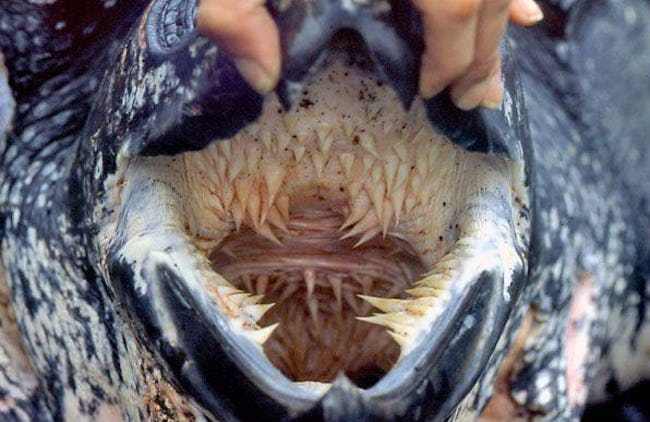
The mouths of leatherback sea turtles are filled with large (and odd looking) oral papillae, mostly made of cartilage. This turtle generally feeds on jellyfish, which are known to sting – the papillae help protect the turtle’s mouth and throat as it swallows its prey.
Payara

The payara, often referred to as a “vampire fish,” is native to the Amazon. It has two large fangs that stick out from its lower jaw and can reach six inches in length. As you might guess, payaras are carnivorous fish, and use their fangs to hunt smaller fish.
Sea Lamprey
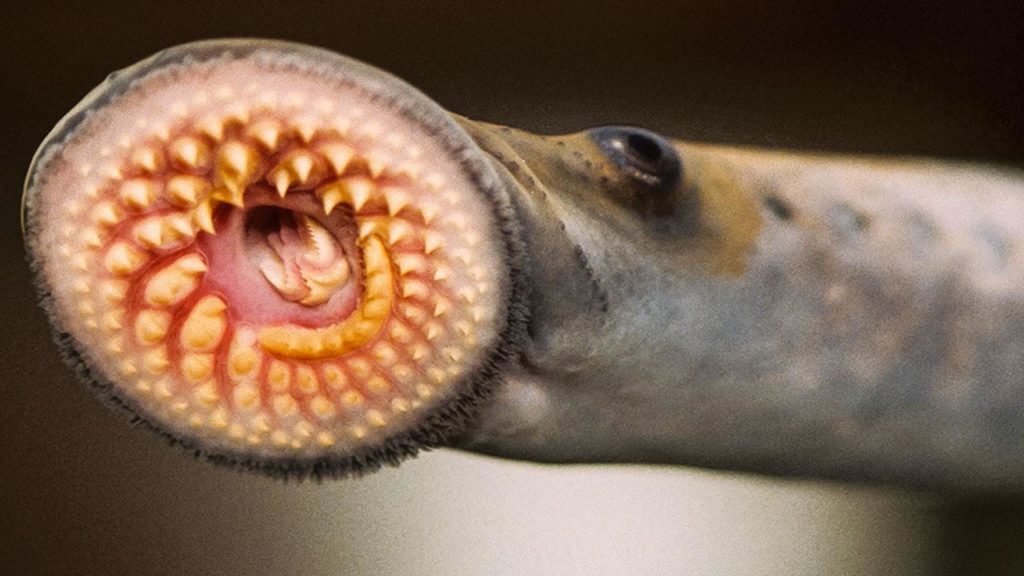
A sea lamprey is kind of like a deep-sea leech, but much more terrifying. Lampreys act as parasites to sharks and other large fish, attaching multiple rows of circular teeth and suckling the blood from their prey.
Anglerfish
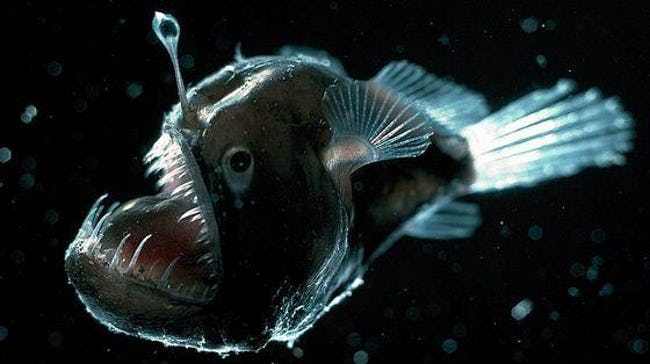
Anglerfish live very deep in the ocean. They have what is essentially a “fishing rod” attached to their foreheads, which they use to lure in prey before they chomp down their enormous, terrifying jaws on a hypnotized victim.
Hagfish
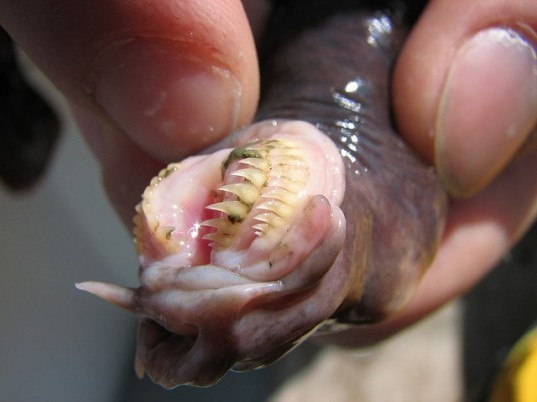
https://benthiclabs.wordpress.com
Hagfish mostly feed on dead or dying fish – they go for the weak prey, so to speak. Their unique sideways teeth help them eat. When a nearly or completely dead fish drops to the ocean floor, hagfish will swarm the carcass. They hook the fish’s flesh by shooting out their tongues, then reeling them back in. When the tongue passes back through the teeth, the teeth close on the decaying flesh.
Goose

Those sharp, serrated teeth-like protrusions on the goose’s tongue and beak are called tomia. They help geese saw through grass and weeds. Yes, they’re terrifying, but remember: birds are one of the closest living relatives to dinosaurs.
Great White Shark

What’s it like to get bitten by a great white shark? They can apply over 4,000 pounds per square inch of force with their jaws, have 48 exposed teeth (with an additional five rows of developing teeth behind those), and each tooth is about two and a half inches long. So, it’s safe to assume it would hurt a lot.
Gelada Baboon
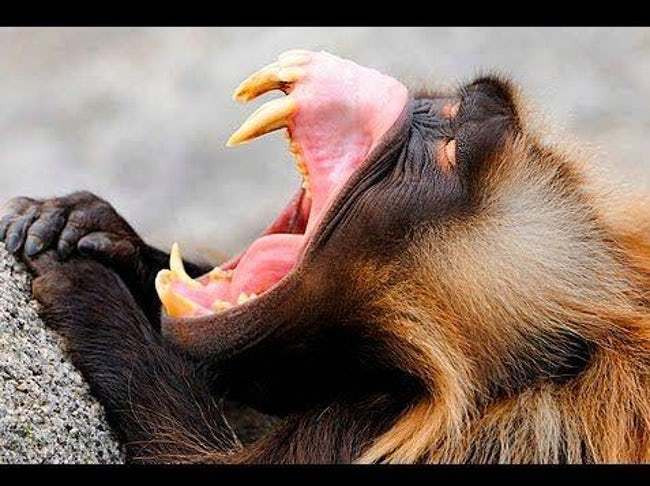
Gelada baboons live in the high mountains of Ethiopia, and graze grass up to 90% of their days. But don’t let that fact make you think they don’t have some fearsome teeth. These baboons are known for their knockout fights, and when they get angry or threatened, they bear their terrifying mouths by flipping back their gums.
Gharial
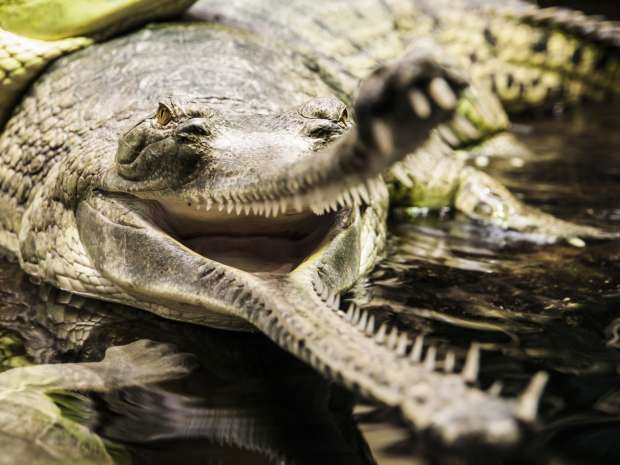
These reptiles – who are members of the crocodile family, have long, thin snout with razor sharp teeth. At the base of its snout is a bulbous growth called a ghara, which is where the animal gets its name. But by far the scariest thing about the gharial is how endangered it is. Native to Asia, these creatures were over hunted for their skin and eggs in the early 20th century.
Cookiecutter Shark
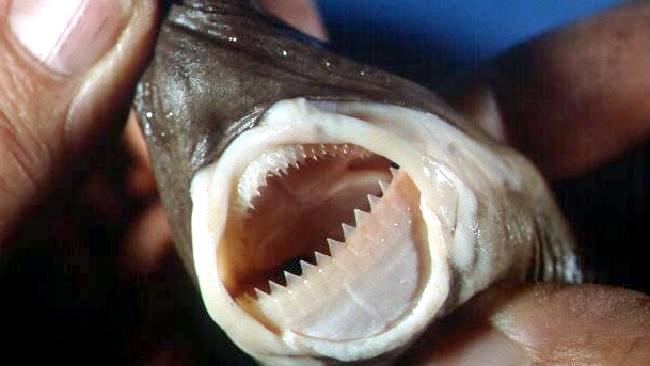
Cookiecutter sharks are aptly named: the wounds they leave on their victims are often “cookie shaped.” Cookiecutter sharks can easily shed and digest their own teeth. They’re also ambitious hunters – they’ll hunt larger prey by taking many small bites over a long period of time.
Camel
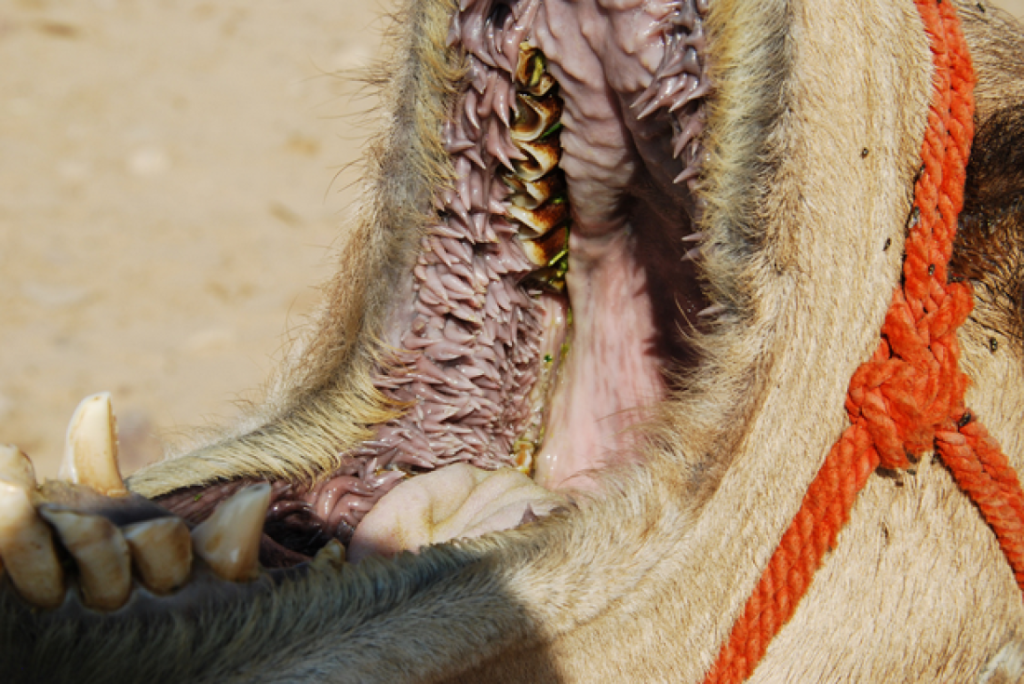
Those bizarre, tentacle-like things in a camel’s mouth are called oral papillae. They help camels eat, mainly by moving hard-to-digest food toward the esophagus, and thus toward the stomach. They also help protect a camel’s mouth from injury.
Spider
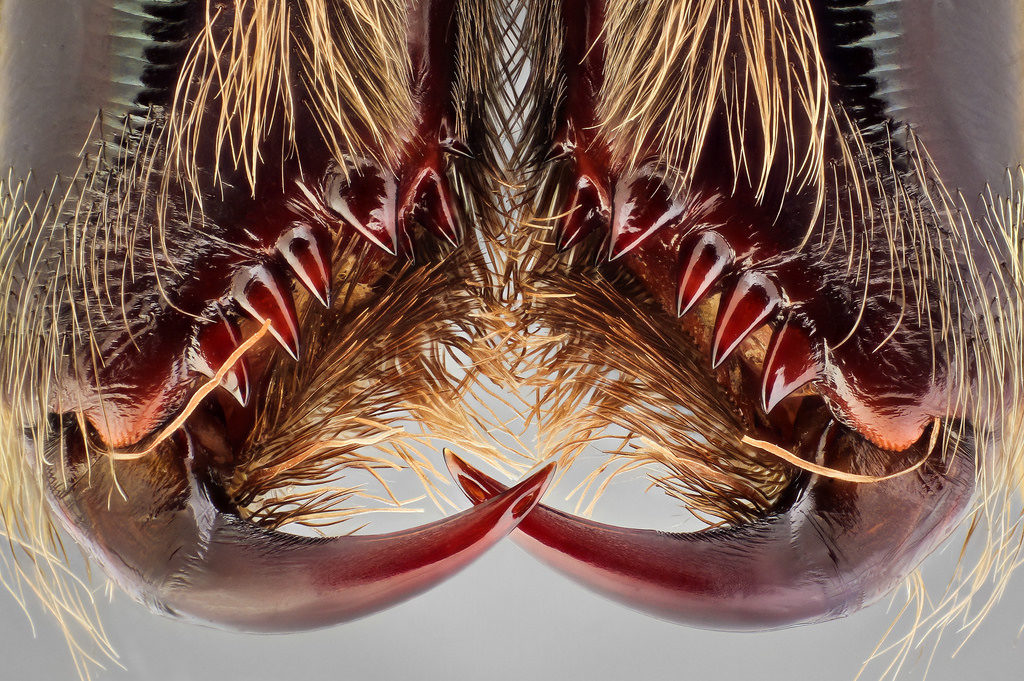
Every spider is a bit different, but they all have small mouths hidden under large, blunt appendages called chelicerae. If the odd proportions weren’t creepy enough, those things also feature venomous fangs. The smaller parts right next to them act as tiny hands that manipulate food into the spider’s mouth.
Pacu Fish

Pacu fish, bizarre creatures with human-like teeth, are cousins to piranhas. They are most frequently found in South America, though they have occasionally popped up in the United States as well. Their eerie teeth are used to grind down nuts and seeds that typically fall into the water from Amazonian vegetation.
Related Content
Adorable Before-And-After Photos Of Dogs And Their Owners Growing Together
Photos Of Melanistic (All Black) Animals That Will Make You Awww